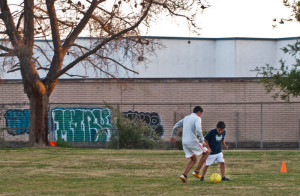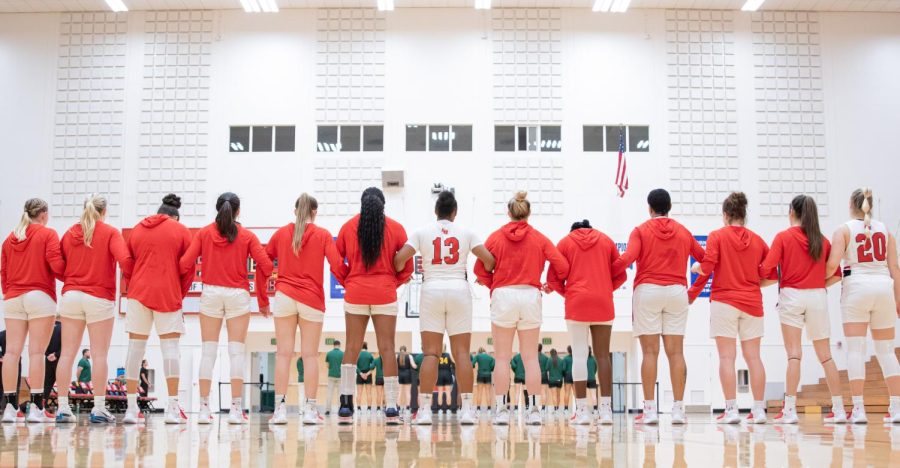
in the Jackson Triangle area live well below the
Federal poverty line.
Bordered by Jackson Street, Harder Road and Whitman Street, the Jackson Triangle area is home to 10,662 residents, many of whom compose the stories and portraits of acute and bitter poverty in the city of Hayward.
A low-income neighborhood where families struggle with economic conditions, underfunded schools and other challenges, under 30 percent of the population – roughly 3,123 people – in the vicinity of South Hayward are 18 years of age or younger, of which 59 percent are of Hispanic descent and over 61 percent qualify for free and reduced meals.
Staggeringly, the city of Hayward and especially the neighborhoods comprising the Jackson Triangle report at high poverty levels, where 36 percent of children under the age of six live below poverty level.
More than 18 percent of Jackson Triangle residents live below the federal poverty line, which as of 2012 is $23,050 for a family of four. The average per capita household income is $17,749 compared with $24,803 for Hayward as a whole and $33,831 countywide, according to 2010 census information.
As of March 2012, the unemployment rate in Hayward is 10.2 percent.
The schools directly in the area, have performed well below county and state averages in academic achievement, and have worsening results for graduation and dropout rates. Additionally, children in the community have elevated rates of health-related problems such as obesity, asthma and diabetes.
A drive down streets such as Soto Road, Huntwood Avenue and Sycamore offers a glimpse of life in the Jackson Triangle. An area marred by a lack of economic development and community resources, tainted with increasing health problems and low educational rates and burdened with occasional gang related violence, the small section of Hayward displays a state of need and disparity in the East Bay.
Graffiti often line the walls and fences where school children play and teenage kids drink beer on street-corners, skipping school to ride their skateboards and play ball.
Day laborers can be seen on street corners, anxiously waiting for someone to offer them a day’s salary, while young mothers carry their young children in hand as they board buses to their jobs and young men flirt with young girls in front of the local grocery store.
Grandparents sit outside their porches, homeless men dwell in the tunnels and people dressed in their Sunday’s best walk to church, as life continues for the residents of the Jackson Triangle.
“We know we’re poor, but life goes on and we try to be happy with whatever God gives us,” said Antonio Lucero, 32, a native of Mexico, Hayward resident of 12 years and father of six-year-old Monica. “It’s not the best life, but you know, we move forward and do everything for our kids.”
Lucero says he works at a limousine service to support his expecting wife, daughter, and a mother-in-law with diabetes. He says they live in an area in the triangle where recent drive-by shootings have occurred and says he works 50- to 60-hour weeks to try and find a better place to live.
“I love Hayward, it is my first home away from home,” he said. “But this place is just covered in poverty, and I have been here 12 years, you know, they keep promising each new program they bring in will make it better, but it hasn’t yet.”
As of October 2010, CSU East Bay was one of 21 applicants nationwide to receive a Promise Neighborhood planning grant from the U.S. Department of Education, which aims to “develop a comprehensive neighborhood revitalization plan to improve educational outcomes and overall life prospects for city residents.”
In 2011, Hayward was one of five cities in the nation to be awarded an implementation grant, funding nearly $25 million for a five-year period.
Dubbed the Hayward Promise Neighborhood (HPN), the initiative works through a collaboration of several community partners, such as the Hayward Unified School District (HUSD), City of Hayward, First 5 Alameda County and La Familia Counseling Services among others to create resources and improve the educational system within the city.
Although still in its first year, CSUEB Co-Principal Investigator for the HPN, Sue Rodearmel, said the initiative is an important and necessary step to improve the state of poverty in Hayward.
“This is an opportunity of a lifetime to be able to serve a neighborhood comprehensively, to help improve the educational outcomes of the kids, and hence improve the overall life prospects of the kids, which then feed back into the community and help lift it out of poverty,” said Rodearmel.
The initiative works through a “cradle-to-career” system by invigorating the educational system in the triangle and the city of Hayward to increase student retention, test scores graduation, and ultimately enrollment in higher education.
Rodearmel said the planning group assessed the specific issues of the community, and created a five-year program to improve health and nutrition through a health center focused on educating adults, increase access to 21st century technology beginning in kindergarten, economic revitalization and workforce development to increase employment such as increasing career technical education, and more.
According to the HPN, the vision is that “all children growing up in Hayward’s Promise Neighborhood will have access to effective schools and strong systems of family and community support that will prepare them to attain an excellent education and successfully transition to college or post-secondary training and career.”
The first measure residents can currently see being implemented in the community is that Harder has recently hired a youth intervention specialist who works with the school to build out community school strategies, services and support that are meant to be more accessible to parents than previous resources.
Andrew Kevy, Program Director for HPN said he understands Lucero’s skepticism, acknowledging that past initiatives have come and gone without effective results.
Yet, Kevy said he believes this initiative is not only different, but guaranteed to be effectual.
“That is definitely an issue that we as a school district have been facing for a number of years. We have tried to do a lot of school programs and haven’t been all that successful and we haven’t had the leg to kind of keep things sustained,” said Kevy.
“I’m a hopeful person and I see the change and need based system in the HPN, and all the great collaborations working together toward a common goal that kids in our city get the best education they possibly can and deserve. I think the sign of hope, and the desire for all of us to work together and have one voice will give the community hope,” he said. “It’s also a long process, but I think once the city sees how the initiative affects their children, they’ll begin to have hope.”
In the meantime, families like the Lucero’s who reside in the Jackson Triangle continue to live their lives, prepared to look past their socio-economic status, unfortunate geographic location, diminished resources and weakened educational system, determined to do best by themselves and their families.
“I’m just going to keep on moving up and working as hard as I can to get out of here and give my children the best opportunities I can,” said Lucero. “You know I drive around and I see other people who were once immigrants and they live better, their children are graduating with honors in universities, they are healthy and happy. I want that, and I’m going to make sure I get that, and I’m not going to depend on some program to do it for me you know. I’m just going to get out of poverty.”












